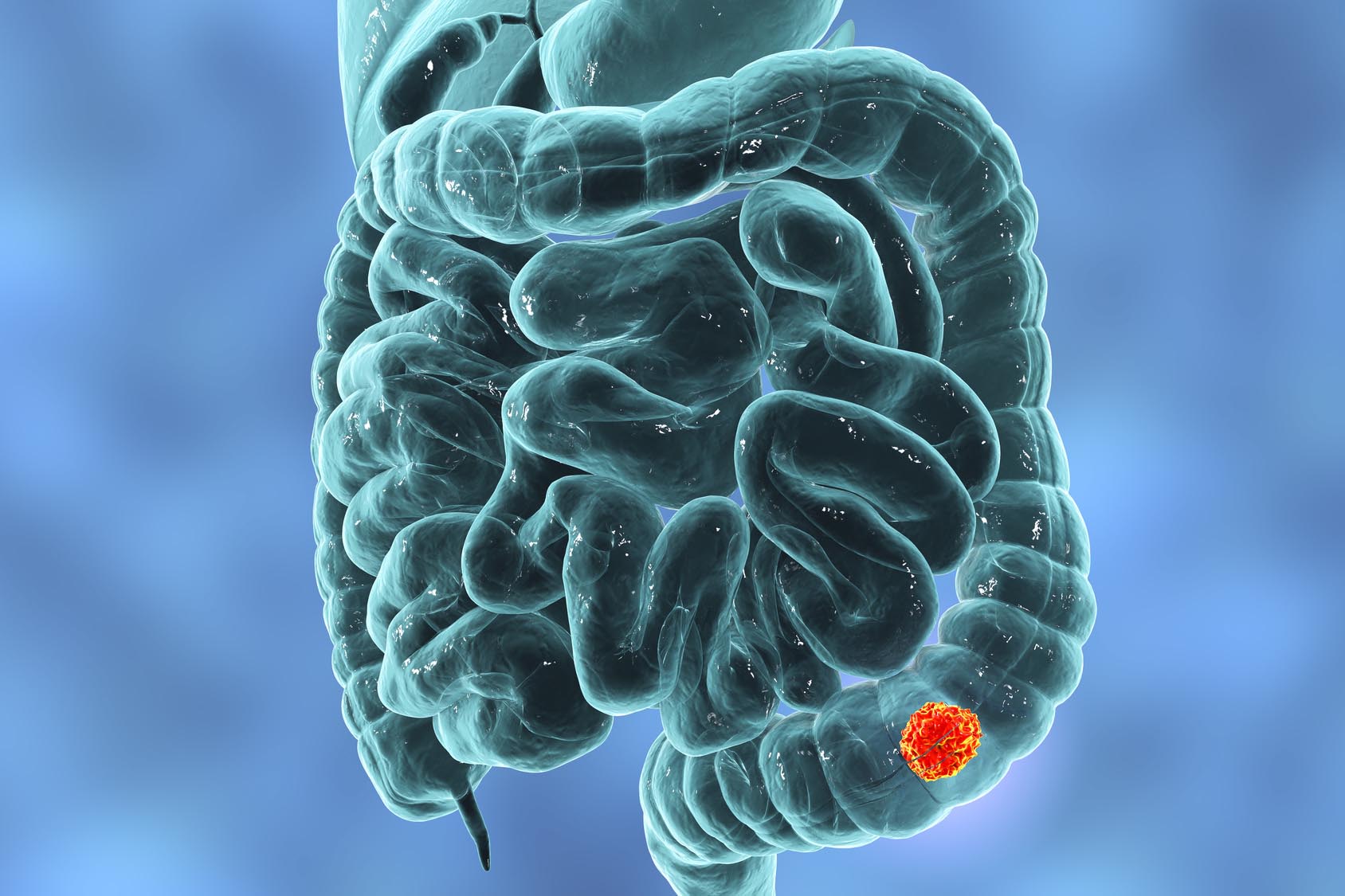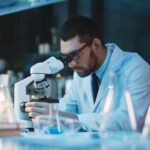• The start of a tumor cell
• Damaging the DNA
-
What is already known on this topic
Some strains of the commensal bacterium Escherichia coli (E. coli) produce colibactin, a DNA-damaging molecule that is involved in the development of colorectal cancer. But how colibactin damages the DNA is still unknown. -
What this research adds
The researchers show that colibactin transfers a chemical group called cyclopropane to the DNA, in both mice and cells grown in a laboratory dish. This reaction forms structures known as DNA adducts, which may generate mutations that contribute to colorectal cancer. -
Conclusions
The findings reveal how a gut microbe may contribute to colorectal cancer and suggest that the DNA adducts can be used as biomarkers to inform cancer prognosis.
Scientists may have just figured out how colibactin, a DNA-damaging molecule produced by certain strains of Escherichia coli (E. coli), contributes to colorectal cancer. By transferring a chemical group to the DNA, colibactin forms structures known as DNA adducts, which may generate mutations and cause DNA strands to break, according to a study led by Matthew Wilson and Yindi Jiang at Harvard University. The results were detailed in the journal Science.
Colibactin is produced by strains of E. coli that are common in gut tissue from people with colorectal cancer. These bacteria are able to promote colorectal cancer in mice, raising speculation that colibactin could contribute to tumor development.
Indeed, previous research suggested that colibactin forms DNA adducts through a chemical group called cyclopropane, but there was no direct evidence of these structures.
The start of a tumor cell
To understand how colibactin works, the team infected human cells with E. coli strains that either could or couldn’t produce colibactin.
After isolating the DNA from both groups of cells, the researchers compared different DNA adducts in the samples, and were able to find DNA adducts that were only present in the cells infected with colibactin-producing bacteria. The team found the same DNA adducts in gut cells from mice colonized only with colibactin-producing strains of E. coli.
Damaging the DNA
Next, the team sought to understand the chemical structure of the DNA adducts. In a test tube, the researchers carried out a series of chemical reactions that allowed them to synthesize mimics of DNA adducts, which were then compared to the adducts found in infected cells.
Both types of adducts originated from a cyclopropane-containing “warhead”, which can break DNA strands. This suggests that cyclopropane is an important chemical group for the activity of colibactin. However, the cyclopropane warhead is likely a degradation product of larger colibactin-DNA adducts, the scientists say.
The study, which provides direct evidence that colibactin can alter the DNA of human and mice cells, supports the idea that this microbial molecule contributes to cancer development through the formation of adducts that may result in genetic mutations. What’s more, the findings suggest that the DNA adducts can be used as biomarkers of colibactin exposure and inform cancer prognosis, the scientists say.









